
Fort Lovrijenac
Removed from Unnamed collection



+ 3


Source: Sam Zoon Images may be subject to copyright. Learn More
Fort Lovrijenac, also known as St. Lawrence Fortress and affectionately dubbed “Dubrovnik’s Gibraltar,” is a stunning fortress and theater perched 37 meters above sea level, just outside the western wall of Dubrovnik, Croatia. This iconic structure is not only celebrated for its dramatic performances but also for its historical role in resisting Venetian domination. It commands a strategic view over the city's two main entrances, both from the sea and by land.
Back in the early 11th century, the Venetians had their sights set on constructing a fort on this very site. Had they succeeded, Dubrovnik might have fallen under Venetian control. However, the resilient locals had other plans. According to the “Chronicles of Ragusa,” the fort was impressively erected in just three months and has been continually fortified since. When the Venetian ships arrived laden with building materials, they were met with a bold directive to return home.
Adding a splash of modern excitement, Fort Lovrijenac is also the Croatian venue for the thrilling Red Bull Cliff Diving World Series. This event draws daredevils and spectators alike, turning the fortress into a vibrant hub of adrenaline and enthusiasm. While you're there, don't miss the chance to explore the fortress itself. The panoramic views of the Adriatic Sea are simply breathtaking, offering a perfect backdrop for memorable photos. You may also be interested:
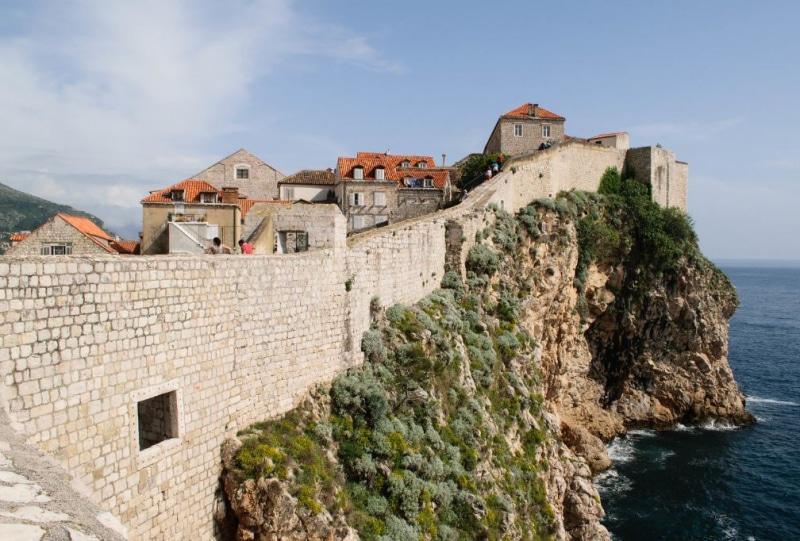
Removed from Unnamed collection
Dubrovnik Ancient City Walls 
The Walls of Dubrovnik, or Dubrovačke gradske zidine in Croatian, are an awe-inspiring series of stone fortifications that have stood guard over the city since its early days as a Byzantium castrum. Nestled in southern Croatia, this maritime city-state, originally known as Ragusa, has a rich history that dates back to before the 7th century. The walls have seen numerous enhancements over the centuries, making them one of the most formidable defense systems of the Middle Ages. Remarkably, they were never breached by any hostile forces during that era. In 1979, the historic old city of Dubrovnik, with its impressive walls, earned a well-deserved spot on the UNESCO World Heritage list. Initially, the town's fortifications were likely simple wooden palisades. However, today's robust city walls, mainly constructed between the 12th and 17th centuries, stretch approximately 1,940 meters (6,360 feet), forming a protective embrace around most of the old city. Standing tall at about 25 meters (82 feet) at their highest point, these walls have been a source of local pride for generations. The majority of the existing structure was built during the 14th and 15th centuries, with continuous enhancements made until the 17th century. Walking along these ancient walls offers not just a glimpse into the past, but breathtaking views of the shimmering Adriatic Sea and the charming terracotta rooftops below. It's like stepping into a time machine, where each stone tells a story. For those with a penchant for history and architecture, exploring Dubrovnik's walls is an unforgettable adventure.
Map
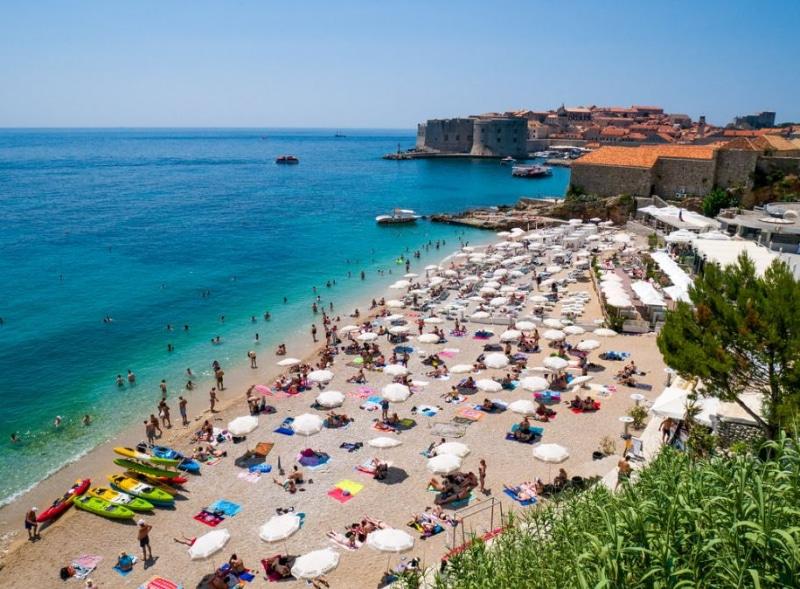
Removed from Unnamed collection
Banje Beach 
Perched perfectly with stunning views of Dubrovnik's Old Town and the enchanting Lokrum Island, Banje Beach is a must-visit spot right in front of the eastern entrance to Dubrovnik Old Town, near Ploče Gate. Nestled along the shoreline, it sits conveniently close to the luxurious hotels Excelsior and Argentina. This beach offers more than just a place to sunbathe with its own reception area, a chic restaurant, and a minimalist café right by the water. The clientele can sometimes be a bit on the posh side, but don't let that deter you. Whether you're looking to rent a deck chair and parasol or seeking a thrilling ride on a jet ski or speedboat, Banje has got you covered. The offerings change with each summer, so there's always something new to try. A word of advice: Banje is a popular spot among tourists, so expect it to be bustling during the summer months. But that's part of the charm, right? Meeting fellow travelers while soaking up the sun and taking in the breathtaking views is all part of the experience. For those seeking a bit of culture, the nearby Old Town is a UNESCO World Heritage site, offering a rich history and stunning architecture to explore. Whether you're here for relaxation or adventure, Banje Beach serves as a perfect starting point.
Map
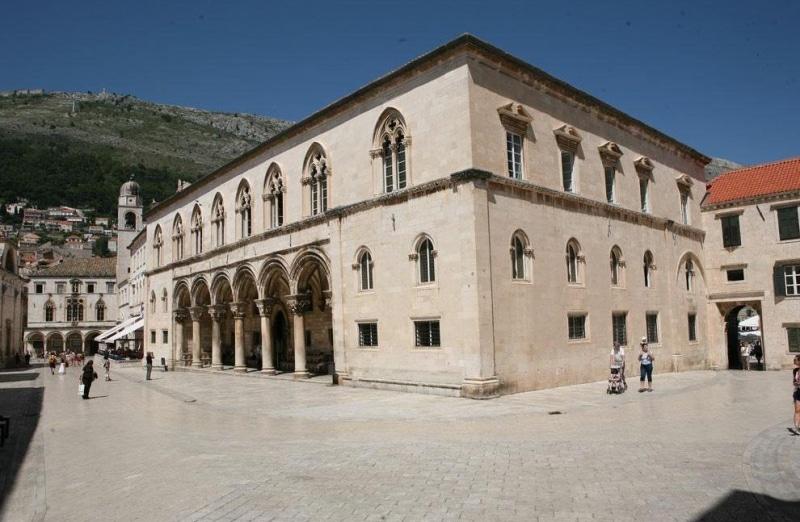
Removed from Unnamed collection
Cultural History Museum Dubrovnik 
The story of the Cultural History Museum in Dubrovnik begins in 1872 with the founding of the Patriotic Museum. Back then, it housed a modest collection of cultural history artworks. Things took a significant turn after World War II, when Dr. Božo Glavić, the passionate curator and first manager of the cultural history department, championed the idea of expanding the collection. His efforts led to the relocation of the collection to the stunning Rector’s Palace, where the first public display was unveiled in 1950. Over the years, this collection evolved into a distinct department within the Dubrovnik Museum, eventually becoming the Cultural History Museum, a key part of Dubrovnik Museums. Today, the museum's collection is a treasure trove of cultural, historical, and artistic gems. It boasts around ten thousand objects, each with its own story, spanning from the late 15th century to the early 20th century. The collection is thoughtfully organized into fifteen categories, including painting, printmaking, furniture, textiles, ceramics, metals, icons, glass, photographs, documents, postcards, and more. Notably, it also features items related to the renowned writer Ivo Vojnović, old weaponry, and numismatics. Wandering through the museum feels like stepping back in time, with each room offering a new discovery. The Rector’s Palace itself is a masterpiece of Gothic and Renaissance architecture, adding to the allure of the experience. It's a place where history and art come alive, inviting visitors to explore the rich cultural heritage of Dubrovnik.
Map
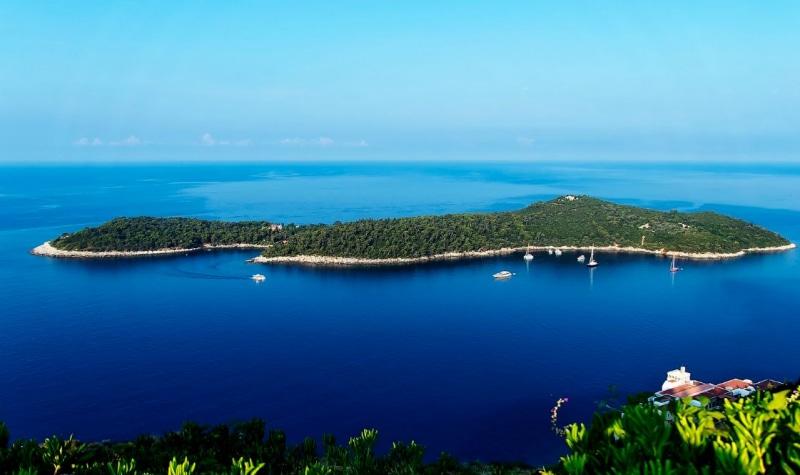
Removed from Unnamed collection
Island of Lokrum 
Just a short ferry ride from the bustling streets of Dubrovnik lies the enigmatic island of Lokrum, one of the world's famed seven cursed islands. Lokrum is a lush, forested paradise teeming with holm oaks, black ash, pines, and olive trees. It's just a quick 10-minute boat trip from Dubrovnik's Old Harbor, making it an ideal escape for a day of adventure. Although the beaches are rocky, the island is a beloved spot for swimming. During the summer, boats depart approximately every hour, with increased frequency in July and August. Your public boat ticket covers the entrance fee, but if you happen to arrive by private boat, you'll need to pay 120 KN at the island's information center. The island's heart is its grand medieval Benedictine monastery. Here, you'll find a restaurant and an intriguing display about the island's history, including its role as a filming location for the TV show Game of Thrones. Don't miss your chance to sit on a replica of the Iron Throne for an epic photo op. The monastery is surrounded by a charming cloister garden and an impressive botanical garden, home to giant agaves and palms from South Africa and Brazil. Not far from here is Fort Royal, a circular fortress started during the French occupation in the early 19th century but mainly used by the Austrians. Climb to the roof for breathtaking views of Dubrovnik's old town. For those feeling adventurous, take a left from the ferry and follow the signs labeled FKK to reach the nudist beach. The far end of the rocks is known as Dubrovnik's unofficial gay beach. If you prefer something a bit more secluded, head to the small saltwater lake known as the Dead Sea for a refreshing swim. Lokrum is also home to a colony of peacocks, descendants of those gifted by Maximilian of Habsburg, adding a splash of color and a touch of regality to the island's natural beauty.
Map
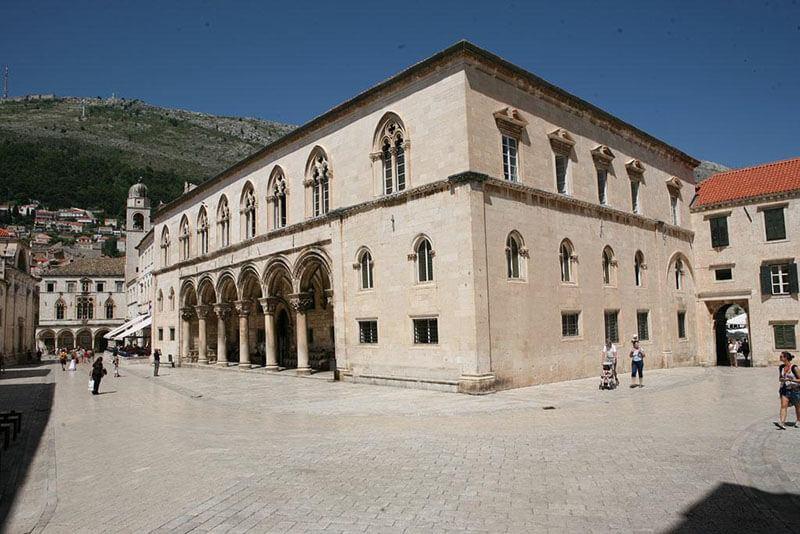
Removed from Unnamed collection
Rector's Palace 
Nestled in the heart of Dubrovnik, the Rector's Palace, or Knežev dvor in Croatian, stands as a testament to the city’s rich and layered history. From the 14th century until 1808, this palace was the bustling center of power for the Republic of Ragusa, serving as the seat of the Rector, the Minor Council, and the state administration. Back in its day, it was much more than a political hub. It was an all-encompassing fortress, housing an armory, a powder magazine, a watch house, and even a prison. The palace itself is an architectural gem, originally crafted in the Gothic style, yet it seamlessly weaves in elements of the Renaissance and Baroque periods. Imagine the early Middle Ages when the site was a simple defensive structure. After a devastating fire in 1435, the city decided to revamp the site. The task was entrusted to Onofrio della Cava from Naples, who had already made a name for himself with the construction of the city's aqueduct. Under his direction, the palace transformed into a Gothic masterpiece adorned with intricate sculptures by Pietro di Martino from Milan. In 1463, a gunpowder explosion wreaked havoc on the building. The renowned architect Michelozzo from Florence was invited to oversee the renewal, but his Renaissance-heavy designs didn’t sit well with the local authorities. Instead, other craftsmen took over, including Salvi di Michele, also from Florence, who introduced Renaissance flair to the porch's capitals in 1467. The palace has withstood its fair share of calamities, including the earthquakes of 1520 and the infamous one in 1667. Each reconstruction left its mark, with Baroque styles adding to its grandeur. A flight of stairs and a bell were added to the atrium, enriching its historic ambiance. In 1638, the Senate commemorated Miho Pracat, a wealthy shipowner from Lopud who generously left his fortune to Dubrovnik, with a monument created by Pietro Giacometti from Recanati. Today, the Rector’s Palace is a must-visit for any history buff or architecture enthusiast. Step inside, and you'll find yourself transported back in time, wandering through halls that echo with centuries of stories. While you're there, take a moment to soak in the intricate details that make this palace a true Dubrovnik treasure. Whether you’re an architecture aficionado or a curious traveler, the Rector’s Palace offers a unique glimpse into a bygone era.
Map

Removed from Unnamed collection
Archaeological Museum Dubrovnik 
In 1872, the Patriotic Museum opened its doors in the enchanting city of Dubrovnik. By mid-1873, the first museum exhibit graced the commune building, showcasing treasures primarily from the Dubrovnik Republic era. Among these remarkable pieces, the archaeological artifacts truly captured attention: think Egyptian mummies, elegant Greek vases, and ancient amphorae. These incredible items were generously donated by collectors, influential patrician families, sailors, and Dubrovnik locals who had ventured far from home. Leading the charge were the Amerling brothers, passionate about the museum's creation, who donated a significant collection of Egyptian, Oriental, and Japanese objects, along with birds, minerals, and various rarities. In 1882, the museum's collection grew even richer thanks to Arthur Evans, a world-renowned archaeologist. Evans, who spearheaded archaeological exploration in the Dubrovnik area, gifted three Roman funerary inscriptions from Cavtat to the museum. These became the first entries in the museum's book of donated and purchased objects. As the field of archaeology began to take shape in Croatia during the early 20th century, enthusiasts gathered around the Dubrovnik branch of the Croatian Antiquarian Society in Knin. The Braće Hrvatskog Zmaja took on the task of investigating the ruins of the Church of St. Stephen, which later became a temporary home for pre-Romanesque sculptures. For anyone visiting Dubrovnik, the museum offers a fascinating glimpse into the past. Its walls are alive with stories of ancient civilizations and the passionate individuals who have dedicated their lives to preserving history. The museum is more than just a collection—it's a journey through time, a chance to connect with the spirit of discovery that has thrived in Dubrovnik for centuries.
Map
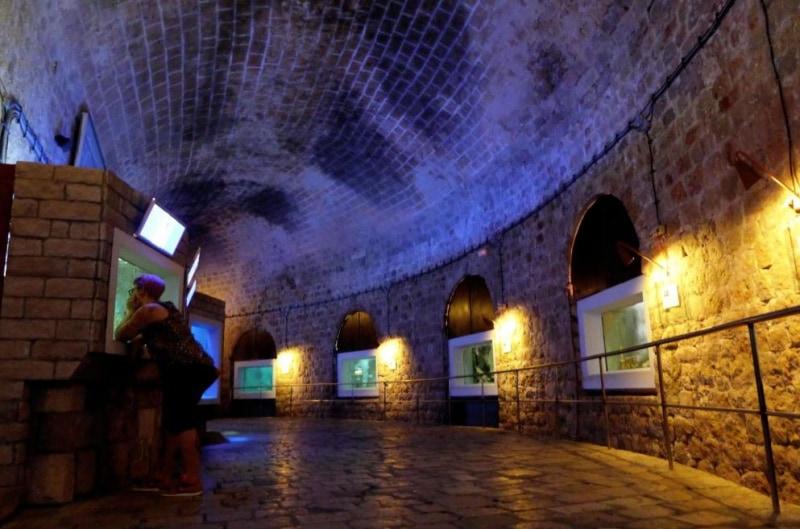
Removed from Unnamed collection
Dubrovnik Aquarium 
Step through the historical atrium and you're instantly transported to a serene world filled with an enchanting atmosphere. Visitors are often mesmerized by the 31 aquariums showcasing the diverse marine life of the Adriatic Sea. The aquarium itself, holding a total of 115 cubic meters, is a marvel of engineering. It ensures that the seawater remains pristine and fresh thanks to four high-pressure pumps that circulate 200 liters of seawater every second. Additionally, a 150-cubic-meter tank uses gravity to naturally maintain the water flow. It's quite the sight! In three large stone-paved aquariums, you'll first meet a gentle giant: the welcoming grouper. Next, there's the yellow fish, a graceful swimmer whose elegance never fails to captivate. The third and largest aquarium is home to its longest resident, a turtle that has been charming visitors since 1953. In 2004, the aquarium was expanded by 50 cubic meters to offer this beloved turtle even more space to roam. You'll also encounter eels nestled among rocky crevices and a myriad of other fascinating fish. As you wander to the right, you'll find a water tank nestled in the hollow of the wall—a spot where a cannon once stood. On your left, more water tanks are cleverly integrated into the walls. The Dubrovnik Aquarium not only offers a glimpse into the underwater world but also a peek into history with its unique setting. Did you know that Dubrovnik is renowned for its medieval architecture and stunning coastline? It's a destination that promises both adventure and tranquility, and the aquarium is a perfect reflection of that dual charm.
Map
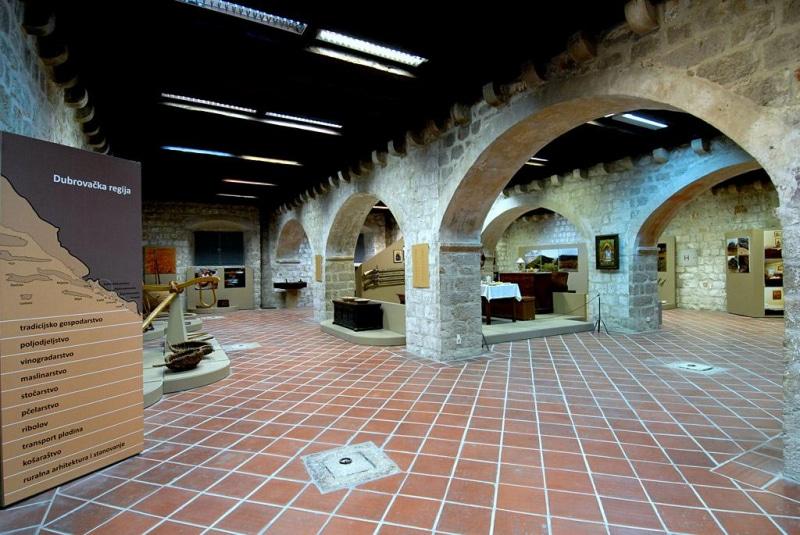
Removed from Unnamed collection
Etnografic Museum Rupe 
The Ethnographic Museum in Dubrovnik is a hidden gem that traces its roots back to the early 20th century. It began with a modest collection focusing on traditional culture, which expanded significantly thanks to the generosity of Jelka Miš, a notable benefactor. Miš, who lived from 1875 to 1956, donated numerous pieces of traditional attire and lace, enriching the museum's offerings. As time passed, these collections evolved into the ethnological department of the Dubrovnik Museum. By 1950, the museum proudly opened its first exhibition on the second floor of Fort St. John, showcasing original ethnographic folk handicrafts from the surrounding region. In the late 1980s, the museum found a new home in the historic building known as Rupe, or The Holes. This intriguing name comes from the underground grain storage areas carved out of bedrock or tufa, which were an essential part of the Dubrovnik Republic's infrastructure. It's fascinating to imagine how these storerooms, once brimming with life's essentials, now house cultural treasures that tell the story of the region's rich heritage. When you visit, take a moment to appreciate the museum's unique location. The granary building itself is an architectural marvel, offering a glimpse into the past with its sturdy construction and ingenious design. It's a perfect backdrop for the captivating artifacts within. So, whether you're a history buff or just curious about local culture, the Ethnographic Museum provides an enriching experience that adds depth to any Dubrovnik adventure.
Map

Removed from Unnamed collection
Franciscan Church and Monastery 
Nestled along the bustling Placa, the main thoroughfare of Dubrovnik, Croatia, stands the magnificent Franciscan Church and Monastery. This sprawling complex, owned by the Order of the Friars Minor, is a treasure trove of history and architectural beauty. It includes a monastery, church, library, and even a pharmacy, each with its own story to tell. Let's take a stroll back in time: The first monastery was constructed in the 13th century, originally outside the city walls. Fast forward to 1317 when a new monastery began to rise inside the walls, near the iconic Pile Gate. This ambitious project took centuries to complete, with various sections being rebuilt multiple times due to the wear of time and catastrophe. One such disaster was the devastating earthquake of 1667, which obliterated the church and claimed many of its artistic treasures, including a statue by Pietro di Martino da Milano. However, the portal overlooking the Placa endured. Sculpted in 1498 by the talented Petrović brothers, it remains a stunning example of Gothic artistry. The portal features an almost life-sized Pietà surrounded by flamboyant leaves, flanked by St. Jerome and St. John the Baptist. Above them stands the figure of the Father Creator, adding a divine touch to this historic entrance. Inside, the church was reborn in the Baroque style, with a single nave that echoes with stories of the past. Remarkably, the marble pulpit withstood the quake's fury, standing as a testament to resilience. The main altar is a masterpiece by sculptor Celia from Ancona, created in 1713. It features a statue of the resurrected Christ encircled by four elegantly twisted marble columns. The five side altars, crafted by Venetian artisan Giuseppe Sardi between 1684 and 1696, add to the church's opulent splendor. Not to be overlooked, the altar of St. Francis boasts decorations painted by Celestin Medović in 1888. As you wander through the church, you'll find the final resting place of the renowned poet Ivan Gundulić, whose works continue to resonate through Croatian culture. The monastery itself, built in 1360 by master Mihoje Brajkov of Bar, showcases late Romanesque style and provides a serene retreat from the lively streets outside. While you're here, don't miss the chance to visit the pharmacy, one of the oldest still-operating pharmacies in the world. It dates back to 1317 and offers a fascinating glimpse into the history of medicine. A stroll through the library will reveal a collection of ancient manuscripts, giving you a deeper appreciation for the knowledge and tradition preserved within these walls.
Map
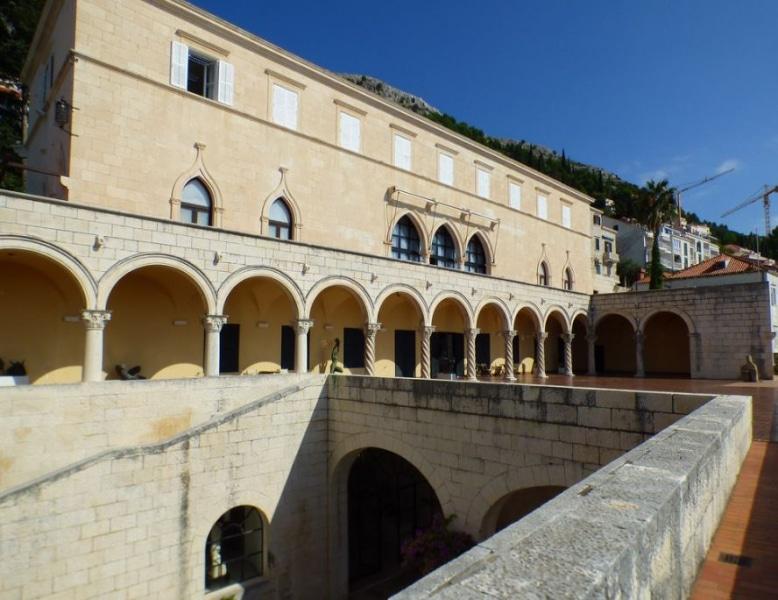
Removed from Unnamed collection
Museum of Modern Art Dubrovnik 
The Museum of Modern Art in Dubrovnik is a captivating blend of history and creativity. Founded in 1945, this cultural gem occupies a building with a story as intriguing as the art within it. Originally constructed between 1935 and 1939, it was envisioned as the luxurious residence of Božo Banac, a prominent ship owner from Dubrovnik. In 1948, however, it found new purpose as a museum, showcasing modern art in a setting brimming with architectural charm. The museum's design is the brainchild of acclaimed Croatian architects Lavoslav Horvat and Harold Bilinić. They crafted it in a neo-Renaissance and Gothic style that echoes the grandeur of Dubrovnik's architectural heritage, reminiscent of landmarks like the Rector’s Palace and the Sponza Palace. It's like stepping into a living piece of history, where every corner tells a story. Inside, the museum boasts nine exhibition rooms, complemented by two storerooms and several smaller workspaces. But what truly sets it apart is the expansive space it offers: 900 square meters indoors and over 1100 square meters of outdoor exhibition space, complete with large terraces that offer breathtaking views of the sea. Imagine strolling through the garden, the salty breeze in your hair, as you ponder the thought-provoking works on display. For those eager to visit, the museum is not just a feast for the eyes but also a chance to appreciate the seamless blend of art and architecture. You'll find yourself inspired not only by the exhibits but also by the building itself, a masterpiece in its own right.
Map
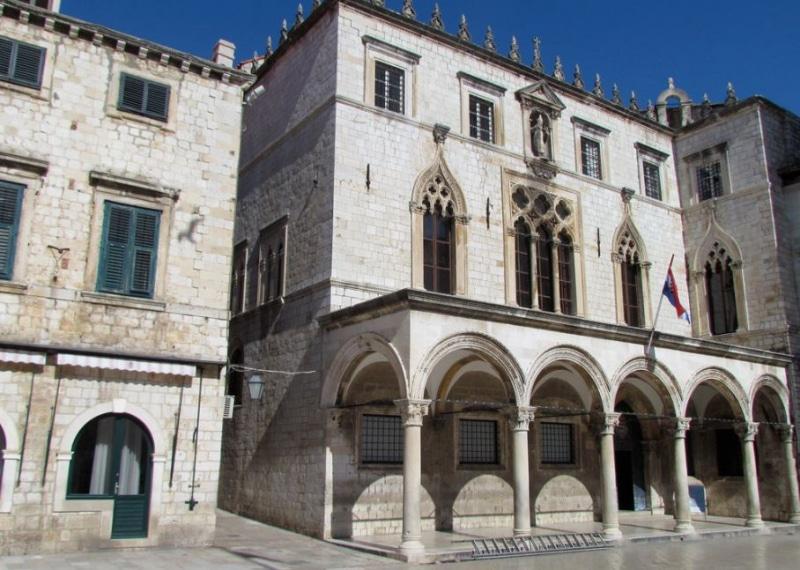
Removed from Unnamed collection
Sponza Palace 
Nestled in the heart of Dubrovnik, Croatia, the Sponza Palace, also known as Palača Sponza or Divona, stands as a remarkable piece of 16th-century architecture. Its intriguing name comes from the Latin word "spongia," referring to the spot where rainwater was once collected. This rectangular gem, with its charming inner courtyard, beautifully marries Gothic and Renaissance styles. Crafted between 1516 and 1522 by the talented Paskoje Miličević Mihov, its loggia and sculptures were the artistry of the Andrijić brothers and other skilled stonecutters. Through the centuries, Sponza Palace has played many roles, serving as a customs office, bonded warehouse, mint, armory, treasury, bank, and even a school. In the 16th century, it became a cultural beacon for the Republic of Ragusa with the founding of the Academia dei Concordi, a prestigious literary academy. Impressively, the palace withstood the devastating 1667 earthquake unscathed, a testament to its solid construction and timeless design. The palace's atrium, once a bustling hub of trade and business meetings, still holds an air of historical significance. An inscription on one of its arches hints at its vibrant past as a center of commerce. Today, visitors can wander through its halls, soaking in the stories of a bygone era. Dubrovnik itself is a city that seems to dance between the past and present, with its ancient stone walls, vibrant street life, and stunning Adriatic views. It's no wonder that the Sponza Palace remains a must-see for anyone exploring this enchanting city.
Map
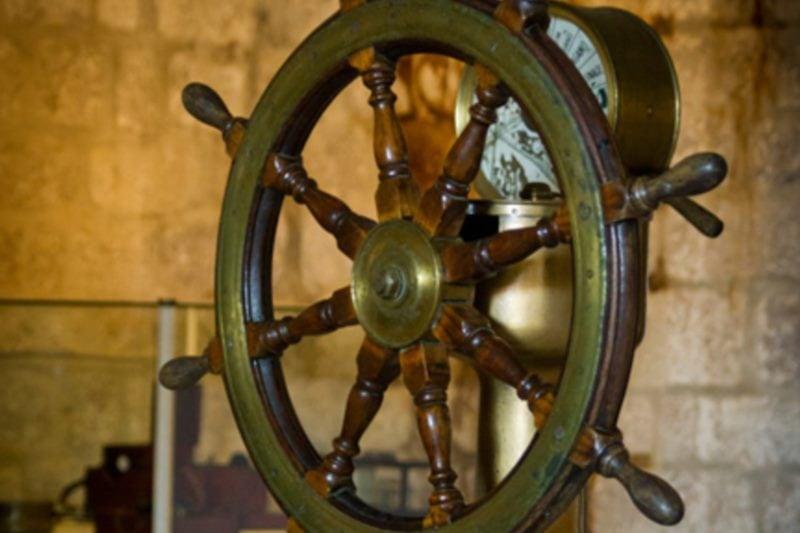
Removed from Unnamed collection
Dubrovnik Maritime Museum 
Nestled within the storied walls of Fort St. John, the Maritime Museum in Dubrovnik is a treasure trove of seafaring history. Founded in 1949 by the Yugoslav, now Croatian, Academy of Sciences and Arts, it became part of the Dubrovnik Museums in 1987. The museum's collection owes much of its richness to the generous donations of Dubrovnik's citizens during the early 20th century. These contributions, along with artifacts from the 1941 exhibition "Dubrovnik Seafaring through the Ages," form the backbone of its impressive holdings. Since 1952, visitors have been able to explore the museum's fascinating exhibits on the first and second floors of Fort St. John. This historical fortification, which dates back to construction starting in 1346, was a key player in guarding the entrance to the city port, crucial for the city's defense. The fort took on its current form by the end of the 16th century, and in the 19th century, it was transformed into a two-story structure. Where once there were artillery embrasures, windows now offer stunning views of the Adriatic. The museum is dedicated to collecting, studying, and showcasing the maritime heritage of the Dubrovnik region, tracing back to Antiquity. With over five thousand artifacts spread across fifteen collections, there's plenty to captivate history buffs and casual visitors alike. Whether you're intrigued by ancient navigation tools or the stories of brave sailors, there's something here for everyone. As you wander through the exhibits, you'll find yourself transported back in time, imagining the adventures of those who sailed these waters long ago.
Map
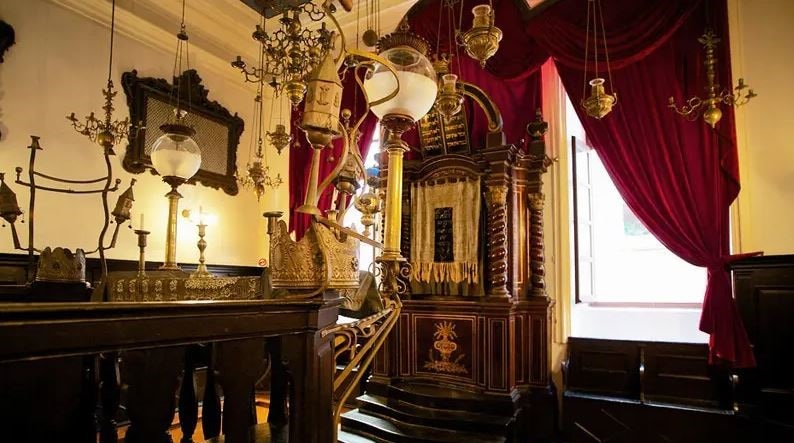
Removed from Unnamed collection
Dubrovnik Synagogue 
Nestled in the heart of Dubrovnik's Old Town, the Old Synagogue stands as a remarkable testament to history and culture. This gem is not just any synagogue; it's the oldest Sefardic synagogue still in use today across the globe and the second oldest in Europe. Though it is believed to have been founded in 1352, it wasn't until 1408 that it received official recognition in the city. The synagogue remains under the care of the local Jewish community. While its main floor is reserved for worship during Holy days and special occasions, it primarily serves as a museum now, showcasing a treasure trove of Jewish ritual items and centuries-old artifacts. Tucked away on one of the quaint, narrow streets of Dubrovnik's Old Town, the synagogue shares a connection with a neighboring building long owned by the Tolentino family. This family has been dedicated caretakers of the synagogue for generations. The synagogue's interior layout sets it apart from other European synagogues, having undergone numerous refurbishments over the centuries. It boasts a fascinating blend of designs from different eras. Despite enduring damages from the great earthquake of 1667, the turmoil of World War II, and the Croatian War of Independence in the 1990s, the synagogue has been meticulously restored to reflect its original design. It welcomed visitors once again in 1997. The museum within is a small yet captivating space, offering glimpses into the rich history of the Jewish community in Dubrovnik. It houses a collection of artifacts that tell stories of resilience and heritage. For travelers, it's a meaningful stop that offers both a glimpse into the past and a peaceful retreat from the bustling streets outside. As you wander through, you can almost hear the echoes of centuries gone by, whispering tales of faith, perseverance, and community spirit that continue to resonate.
Map
 Sam Zoon
Sam Zoon 
 Croatia
Croatia